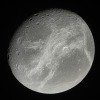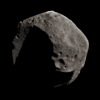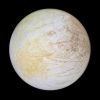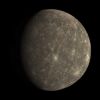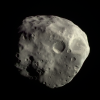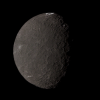Emily Lakdawalla • Dec 06, 2009
Planetary Society Advent Calendar for December 6: Umbriel
Umbriel is the darkest moon in a pretty dark place in the solar system, the Uranus system. Pretty much everything we know about its surface is based on about 10 images captured by Voyager, which show only its southern hemisphere because it was summer at Uranus when Voyager flew past. Apart from that, there have been spectral studies from Earth-based telescopes that cannot actually resolve individual features on its surface. Since Voyager, astronomers have taken advantage of the Uranian equinox to attempt to learn about features on the northern hemispheres of the moons of Uranus; I haven't heard of any results yet published that were based on those observations, though. So the image below represents nearly all we know about it. Not much, and -- the achievement of the Voyager missions and the skill of Ted Stryk notwithstanding -- not really a very high-quality photo.
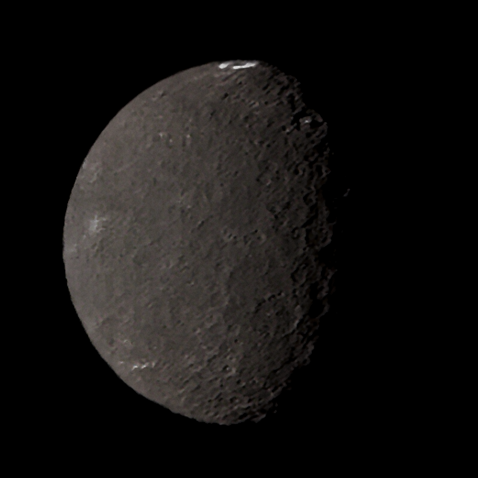
The Voyager images of the Uranian moons are not as good as its images from Jupiter and Saturn in part because Voyager's cameras were not designed for use under such low light levels. Sadly, I don't expect to see an orbital mission to Uranus in my lifetime (though I would be delighted to be wrong about that); I think that if we do send an orbital mission that far out, it will go instead to Neptune and its fascinating moon Triton. But I think that a modern flyby spacecraft supplied with extremely high-resolution cameras designed for such low light levels -- something like New Horizons-- would actually produce a huge amount of science at Uranus, particularly if it could manage to carry along and drop off a Uranus atmospheric probe as it passed through.
Each day in December I'm posting a new global shot of a solar system body, processed by an amateur. Go to the blog homepage to open the most recent door in the planetary advent calendar!
Let’s Go Beyond The Horizon
Every success in space exploration is the result of the community of space enthusiasts, like you, who believe it is important. You can help usher in the next great era of space exploration with your gift today.
Donate Today

 Explore Worlds
Explore Worlds Find Life
Find Life Defend Earth
Defend Earth


